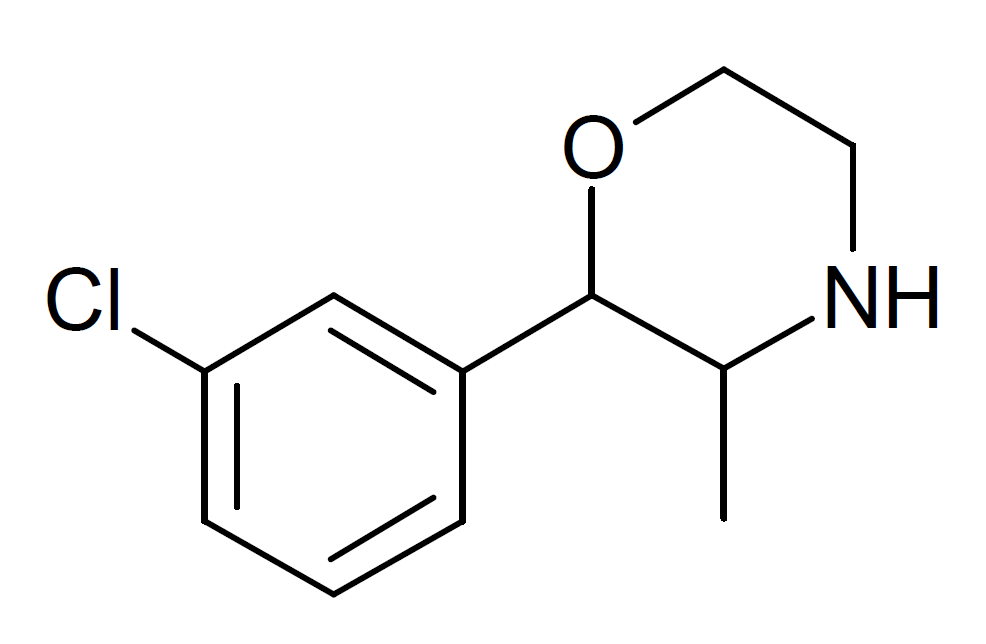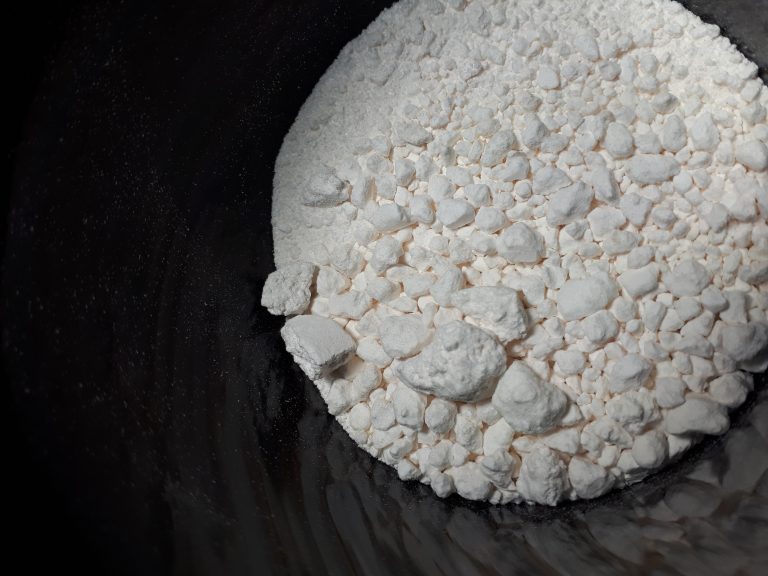Contents
Summary
3-Chlorophenmetrazine, often referred to as 3-CPM, is a synthetic chemical compound belonging to the class of phenylmorpholines. It is a member of the substituted phenmetrazine family, which includes other compounds with stimulant properties. Phenmetrazine and its derivatives have historically been used for their potential stimulating effects.
| Identifiers | |
|---|---|

Effects
- Stimulant Properties: 3-Chlorophenmetrazine is known for its stimulating effects on the central nervous system. Users may experience increased alertness, wakefulness, and enhanced focus when under its influence.
- Elevated Mood: Like other stimulants, 3-CPM may induce a sense of euphoria and improved mood, which can be appealing to some users.
- Appetite Suppression: Stimulants like 3-chlorophenmetrazine often lead to reduced appetite. This effect has been utilized in the past for weight management and could aid individuals seeking to control calorie intake.
Dosage
The appropriate dosage for 3-Chlorophenmetrazine can vary significantly depending on factors such as an individual’s tolerance, body weight, and desired effects. However, it is essential to approach this substance with caution due to the limited research and knowledge available about its safety and dosage guidelines. Users should start with the smallest effective dose and avoid exceeding it to minimize the risk of adverse effects.
Toxicity
The safety profile of 3-chlorophenmetrazine is not well understood, primarily due to the limited research and documentation available. Some potential concerns related to its use include:
- Cardiovascular Effects: Stimulants like 3-CPM can lead to increased heart rate and elevated blood pressure, potentially posing risks to individuals with underlying heart conditions.
- Psychological Effects: Long-term or excessive use of stimulants may lead to psychological issues, including anxiety, paranoia, and even addiction.
- Limited Research: The lack of comprehensive research on 3-Chlorophenmetrazine makes it challenging to assess its long-term safety accurately.
Legal Status
The legal status of 3-chlorophenmetrazine varies by country and region. In some areas, it may be categorized as a controlled substance or fall under specific regulations due to its stimulant properties. Users should be aware of the legal status of 3-CPM in their location and stay updated on any changes in laws.
Pharmacology
3-Chlorophenmetrazine is believed to act as a central nervous system stimulant, similar to other compounds in its class. It likely affects the release and reuptake of neurotransmitters like dopamine and norepinephrine, contributing to its stimulating effects. However, further research is needed to elucidate its exact pharmacological mechanisms.

Chemistry
3-Chlorophenmetrazine has a chemical structure that includes a phenyl ring and a morpholine ring with a chlorine substituent at one of the phenyl ring positions. This chemical composition is characteristic of phenmetrazine derivatives, which share structural similarities with amphetamines and other stimulants.
Conclusion
3-Chlorophenmetrazine, or 3-CPM, is a synthetic compound with stimulant properties. Although it has been associated with potentially stimulating effects, including increased alertness, mood elevation, and appetite suppression, it is essential to approach it with caution.
The limited research on 3-CPM, combined with concerns about its safety and potential adverse effects, underscores the need for careful consideration. Users should exercise restraint when it comes to dosage, consult with healthcare professionals, and stay informed about the legal status of 3-Chlorophenmetrazine in their area. Additionally, further scientific investigation is necessary to gain a more comprehensive understanding of its pharmacology and long-term safety implications. As with any substance, responsible use and prioritizing health and safety should be paramount.
FAQ
1. What is 3-Chlorophenmetrazine (3-CPM)?
3-Chlorophenmetrazine, often referred to as 3-CPM, is a synthetic chemical compound classified as a phenylmorpholine. It is known for its stimulant properties and is structurally related to phenmetrazine, a combination historically used for its stimulating effects.
2. What are the potential effects of 3-CPM?
The potential effects of 3-chlorophenmetrazine include increased alertness, wakefulness, improved mood, and appetite suppression. It is considered a central nervous system stimulant and may induce feelings of euphoria.
3. Is 3-CPM safe to use?
The safety of 3-chlorophenmetrazine is not well understood, primarily due to limited research and documentation. As with many substances with stimulant properties, there may be potential risks associated with its use, including cardiovascular effects and psychological issues.
4. What is the recommended dosage of 3-CPM?
The appropriate dosage of 3-chlorophenmetrazine can vary based on individual factors such as tolerance, body weight, and desired effects. Due to limited research, it is crucial to approach 3-CPM with caution and start with the smallest effective dose to minimize potential risks.
5. Are there any potential side effects of 3-CPM?
Potential side effects of 3-chlorophenmetrazine may include increased heart rate, elevated blood pressure, anxiety, paranoia, and appetite suppression. Individual responses can vary, and long-term or excessive use may lead to more severe psychological issues.
6. What is the legal status of 3-CPM?
The legal status of 3-chlorophenmetrazine varies by country and region. It may be categorized as a controlled substance or subject to specific regulations in some areas due to its stimulant properties. Users should be aware of the legal status of 3-CPM in their location and stay updated on any changes in regulations.
7. How does 3-CPM work in the body?
3-Chlorophenmetrazine is believed to act as a central nervous system stimulant, affecting neurotransmitters like dopamine and norepinephrine. These effects contribute to its stimulating properties, but the precise mechanisms still need to be fully understood and require further research.
8. Can 3-CPM be taken with other supplements or medications?
The potential interactions between 3-chlorophenmetrazine and other supplements or medications are not well-documented. It is advisable to consult with a healthcare professional before combining 3-CPM with other substances to avoid potential adverse effects or interactions.
9. Should I consult a healthcare professional before using 3-CPM?
Yes, it is strongly recommended to consult with a healthcare professional before using any product containing 3-chlorophenmetrazine. They can assess your health, guide safe usage, and help you make informed decisions regarding its potential benefits and risks.
10. What alternatives are available to 3-CPM for enhancing alertness and focus?
There are various alternatives to 3-chlorophenmetrazine for enhancing alertness and focus, including caffeine, natural nootropics, adequate sleep, and stress management techniques. Consulting with a healthcare professional can help you explore safe and effective options tailored to your needs while prioritizing your health and well-being.
References
- US 20130203752, Blough BE, Rothman R, Landavazo A, Page KM, Decker AM, “Phenylmorpholines and analogues thereof”, published 8 August 2013, issued 11 April 2017, assigned to National Institutes of Health, U.S. Department of Health and Human Services